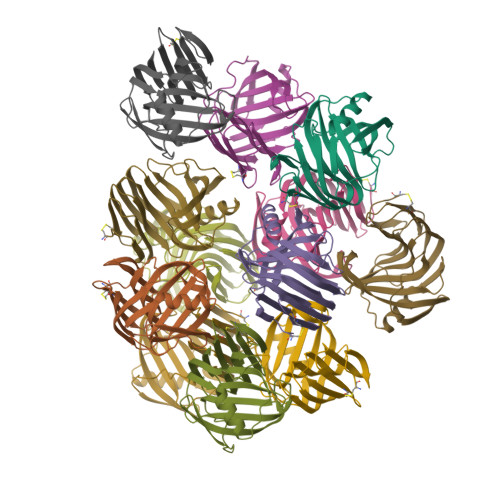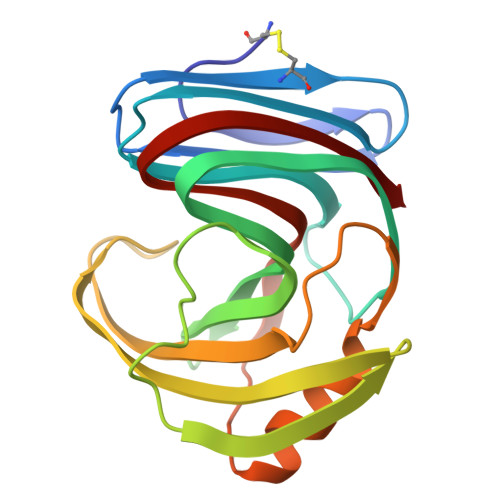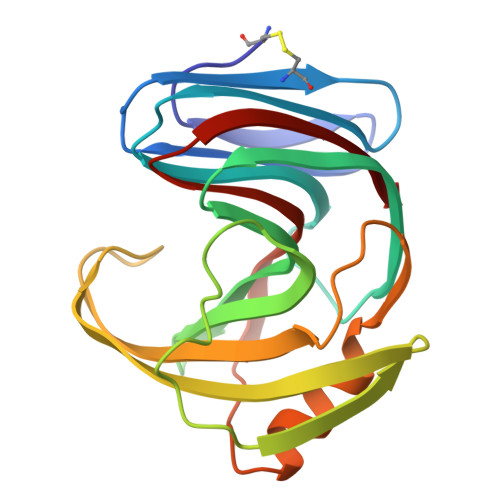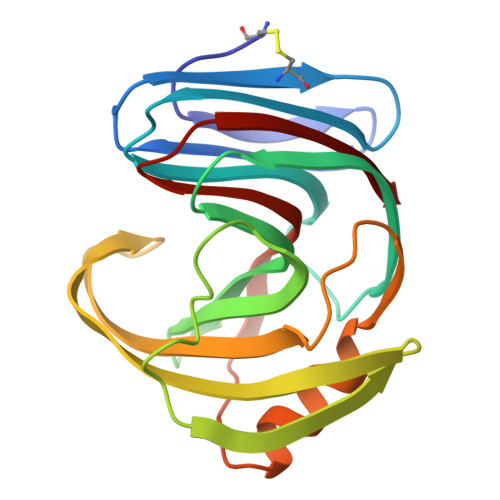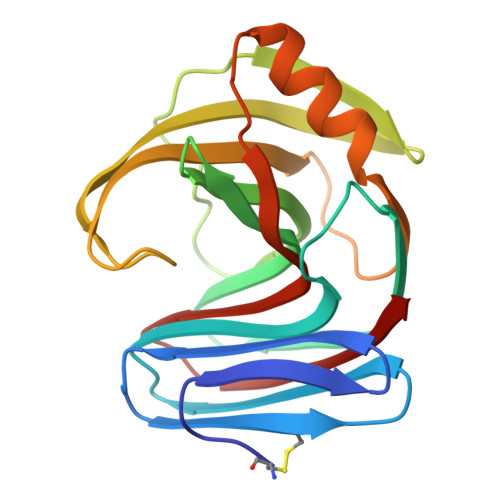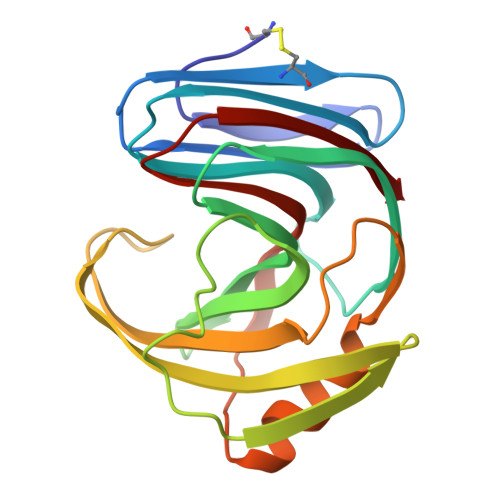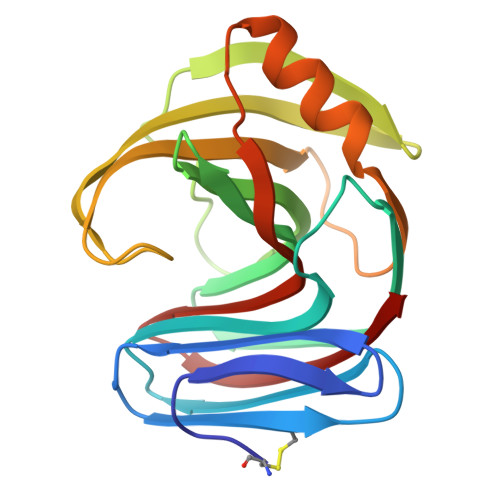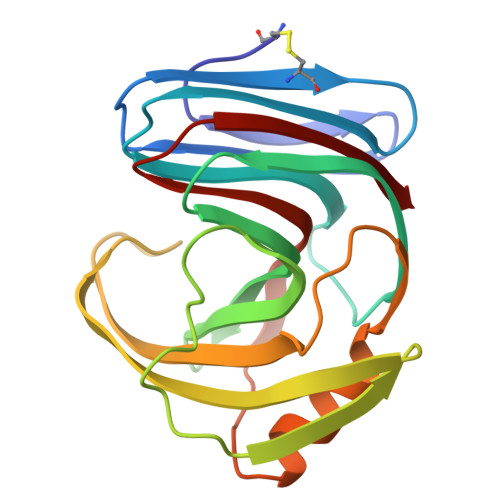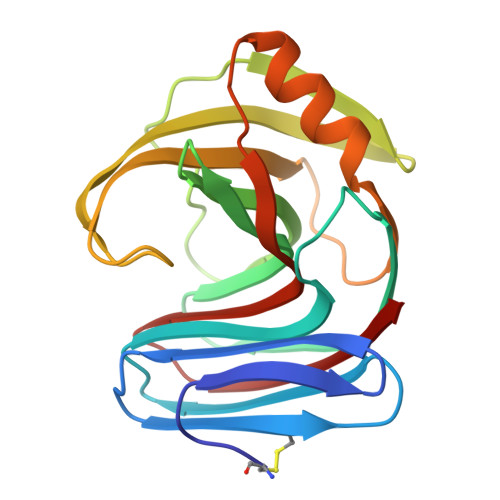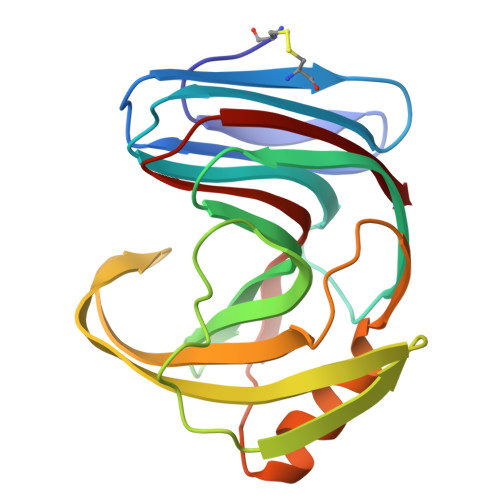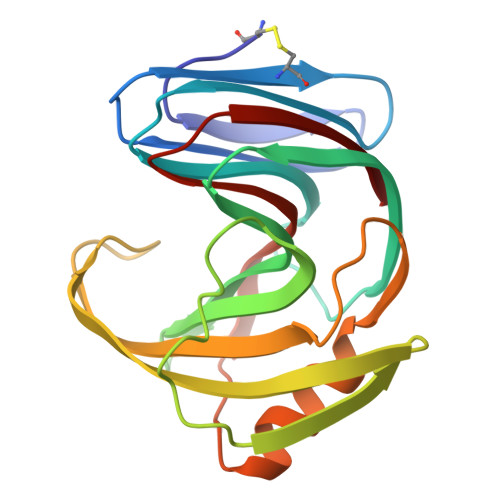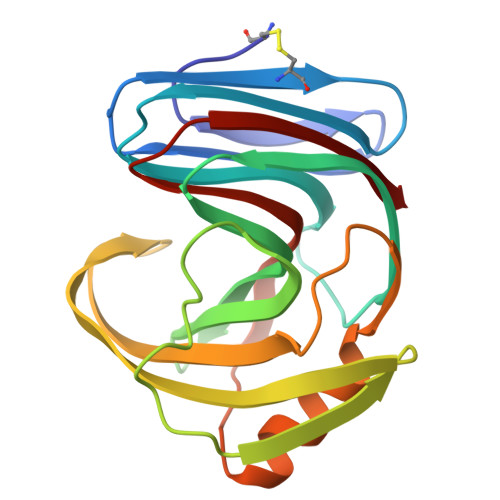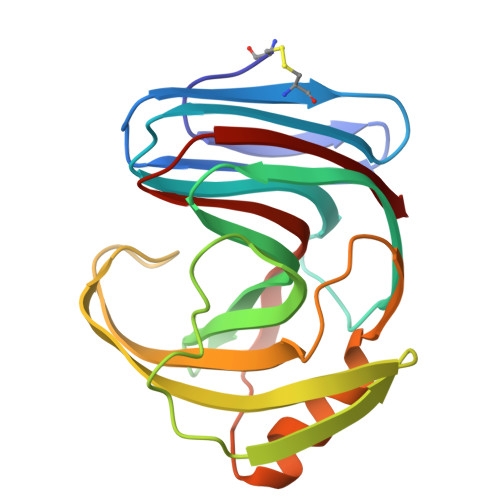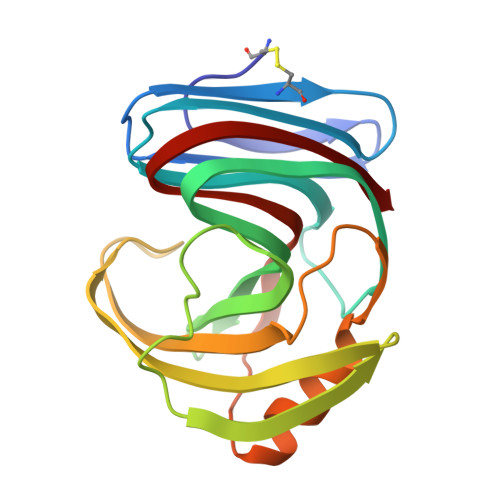Construction of Thermophilic Xylanase and Its Structural Analysis
Watanabe, M., Fukada, H., Ishikawa, K.(2016) Biochemistry 55: 4399-4409
- PubMed: 27410423
- DOI: https://doi.org/10.1021/acs.biochem.6b00414
- Primary Citation of Related Structures:
5HXV - PubMed Abstract:
The glycoside hydrolase family 11 xylanase has been utilized in a wide variety of industrial applications, from food processing to kraft pulp bleaching. Thermostability enhances the economic value of industrial enzymes by making them more robust. Recently, we determined the crystal structure of an endo-β-1,4-xylanase (GH11) from mesophilic Talaromyces cellulolyticus, named XylC. Ligand-free XylC exists to two conformations (open and closed forms). We found that the "closed" structure possessed an unstable region within the N-terminal region far from the active site. In this study, we designed the thermostable xylanase by the structure-based site-directed mutagenesis on the N-terminal region. In total, nine mutations (S35C, N44H, Y61M, T62C, N63L, D65P, N66G, T101P, and S102N) and an introduced disulfide bond of the enzyme contributed to the improvement in thermostability. By combining the mutations, we succeeded in constructing a mutant for which the melting temperature was partially additively increased by >20 °C (measured by differential scanning calorimetry) and the activity was additively enhanced at elevated temperatures, without loss of the original specific activity. The crystal structure of the most thermostable mutant was determined at 2.0 Å resolution to elucidate the structural basis of thermostability. From the crystal structure of the mutant, it was revealed that the formation of a disulfide bond induces new C-C contacts and a conformational change in the N-terminus. The resulting induced conformational change in the N-terminus is key for stabilizing this region and for constructing thermostable mutants without compromising the activity.
Organizational Affiliation:
Biomass Refinery Research Center, National Institute of Advanced Industrial Science and Technology (AIST) , 3-11-32 Kagamiyama, Higashi-Hiroshima, Hiroshima 739-0046, Japan.








